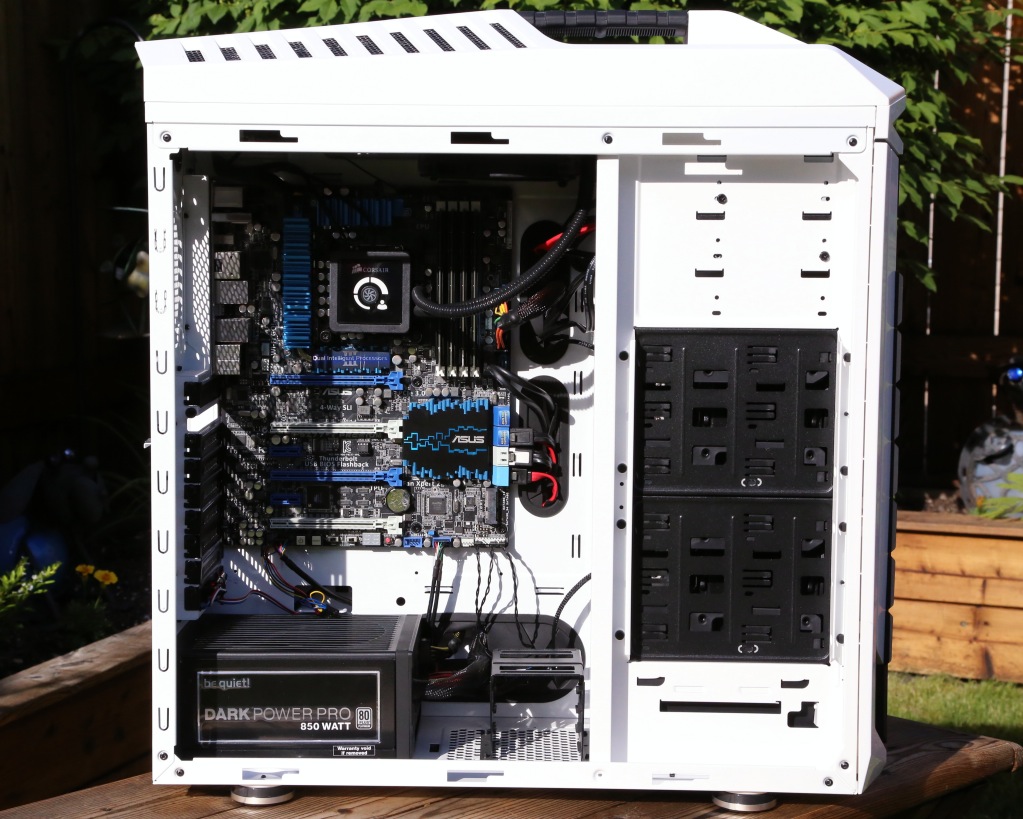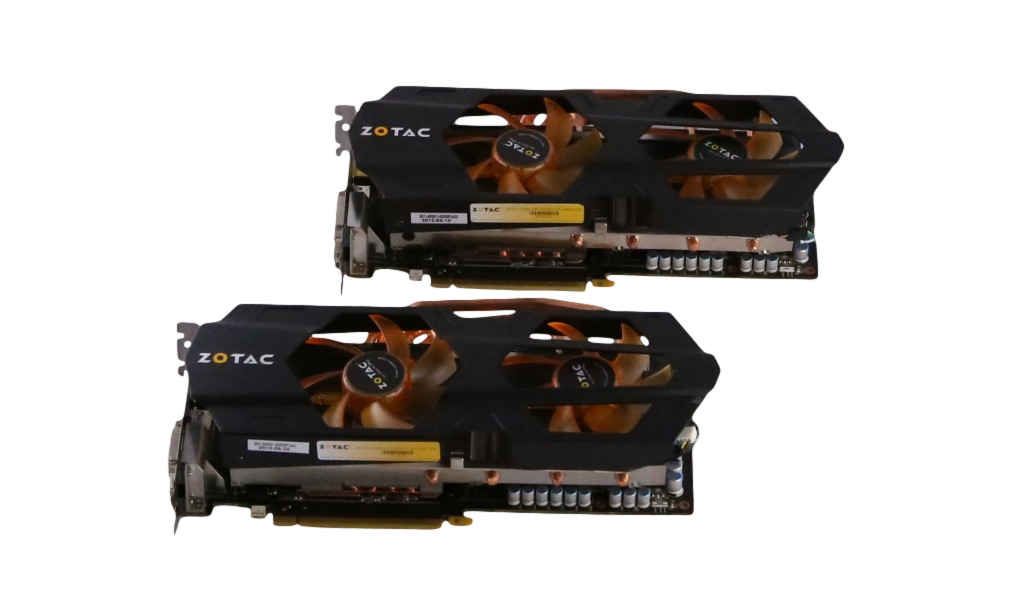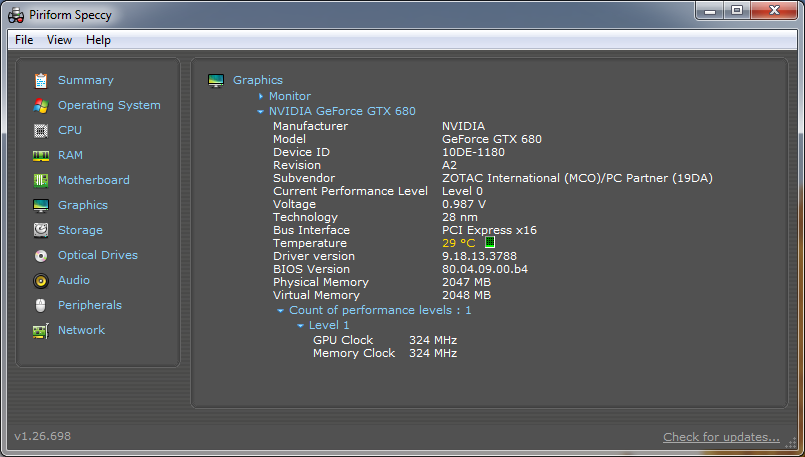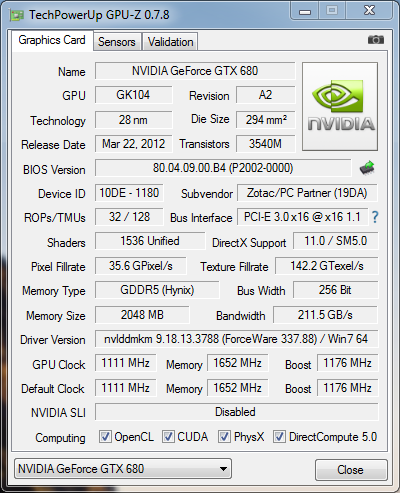TECHNOLOGY X TESTING PROTOCOL
At Technology X, we test our graphics cards slightly different depending on the purpose of the product, whether it’s for an entry level user or if its for an extreme gamer. Throughout all of our testing, we ensure that our system has been optimized with our SSD Optimization Guide. Benchmarks of the products we test are that of brand new products. This means that the product has not been used previously, except possibly for some initial testing performed by the manufacturer. The purpose of this is so that we can verify that the manufacturer’s specifications match the product. Additionally, we also try to include links to the benchmarks used in our report so that you, as the reader, can replicate our tests to confirm that your graphics cards is as awesome as it should be!
SYSTEM COMPONENTS
This Test Bench build was the result of some great relationships and purchases; our appreciation goes to the below mentioned manufacturers for their support in our project. All of the components we use for testing and evaluation can be easily purchased at a relatively affordable price. The links provided below can assist in pricing, as well as availability for those of you who may find interest in our equipment.
| PC CHASSIS: | Cooler Master CM Strom Stryker Chassis |
| MOTHERBOARD: | ASUS P8Z77-V Premium Motherboard |
| CPU: | Intel i7 3770K CPU |
| CPU COOLER: | Corsair H100 CPU Cooler |
| POWER SUPPLY: | be quiet! Dark power Pro 850W |
| SYSTEM COOLING: | be quiet! Silent Wings 2 Chassis Fan |
| MEMORY: | Crucial Ballistix Dual Channel DDR3 Memory |
| GRAPHICS CARD: | N/A |
BENCHMARK SOFTWARE
The software used for today’s analysis is typical of many of our reviews and consists of Piriform Speccy, GPU-Z, FutureMark’s 3D Mark, 3D Mark 11, PCMark Vantage, Unigine Valley and Heaven, as well as FurMark. In consumer reports, we prefer to test with easily accessible software that the consumer can obtain, and in many cases, we even provide links. Our selection of software allows each to build on the last and to provide validation to results already obtained.
There is however one other benchmark test that is worth mentioning, which is included in a wide variety of reviews by other websites. FRAPS is a Windows application that is used while you are playing your favourite PC game to measure the FPS. This is an excellent tool for measuring the difference in performance you will achieve when comparing different graphic settings or different graphics cards. Technology X strives to create a testing environment that can be easily replicated, and to completely describe every setting and parameter required to achieve the FPS we would achieve in our game and system would be impractical and yet still may not provide you with a perfect environment to test your card. All of our benchmarks are easily downloadable, free, contain presets, and serve as an easy comparison for you, your system and graphics card. We do encourage you to use FRAPS to test different graphic settings and how the FPS changes upon each adjustment.
First things first, we have utilized a freeware tool called Display Driver Uninstaller, many other graphics cards reviewing websites fail to mention how they get rid of other graphics card drivers that bog and slow down your new set up. In our case, we were originally running straight off of the HDMI port in our ASUS motherboard .. don’t judge us … We needed to eliminate the installed Intel display drivers to ensure that there was no miscommunication with today’s graphics card up for review. While intimidating at first, the DDU is very easy to use, and well worth taking the time to delete those previous drivers from your system.
What about the new drivers? Well you could let Windows go online and find the driver for you and leave it at that. However, it is a better idea to install the driver from the manufactures website. With NVIDIA, you can also download a new tool called NVIDIA GeForce Experience. This easy to use tool manages your graphics card driver and keeps it up to date. You can even set it to update your card to the newest beta drivers, however this is not recommended for new users.
We are lucky enough to be taking a look at two of the ZOTAC GeForce GTX 680 AMP! Edition graphics cards. For today’s report we are going to begin by looking solely at the performance of a single ZOTAC GeForce GTX 680, then we will move over to a SLI configuration and see how the two of them perform as one.
ZOTAC GEFORCE GTX 680 AMP! EDITION – SINGLE CARD
PIRIFORM SPECCY
Piriform Speccy is a great tool for checking the status and health of your computer system. It provides you with brief summary, or a detailed look, at your operating system, CPU, RAM, motherboard, graphics, storage, optical drives, audio, peripherals and network.
Taking our first look at Speccy, we can see that the ZOTAC graphics card is based off of NVIDIA’s GeForce GTX 680, is based on their 28 nm processing, is running out of the PCI Express x16 bus, and is running at a cool 29 degrees celsius. Let’s dig a bit deeper.
GPU-Z
GPU-Z is a very simple, easy to use tool that can provide you with a bunch of information about your graphics card. This utility is very easy to read, and to use as you can easily see the actually GPU, sub vendor, bus interface, driver version, memory size, GPU clock frequency and more. It can even determine whether you are running a single GPU or multiple GPUs in your system. This small utility can tell you more about your gprahics card than you will ever need to know.
With GPU-Z, we again see that we are looking at a GeForce GTX 680, but we can also see that the original release date, the number of transistors, the type of memory, bus width and bandwidth, even the driver version. As we look closer, we can also see that the GPU default clock speed is 1111 MHz and can be boosted up to 1176 MHz is times of greater stress. The memory clocks in at 1652 MHz. Finally, that we are running a single card and not in a SLI configuration.
Review Overview
Build Quality
Specifications
Performance
Pricing & Warranty
Availability
Awesome Graphics!
The ZOTAC GeForce GTX 680 AMP! Edition is a great option if you are looking to upgrade the graphical performance of your system. Being an older card you may be able to achieve better pricing and will be able to run a cheap, but high quality, multi-GPU system, of course if can manage to get your hands on them!
 Technology X Tomorrow's Technology Today!
Technology X Tomorrow's Technology Today!





How much for your daughters?